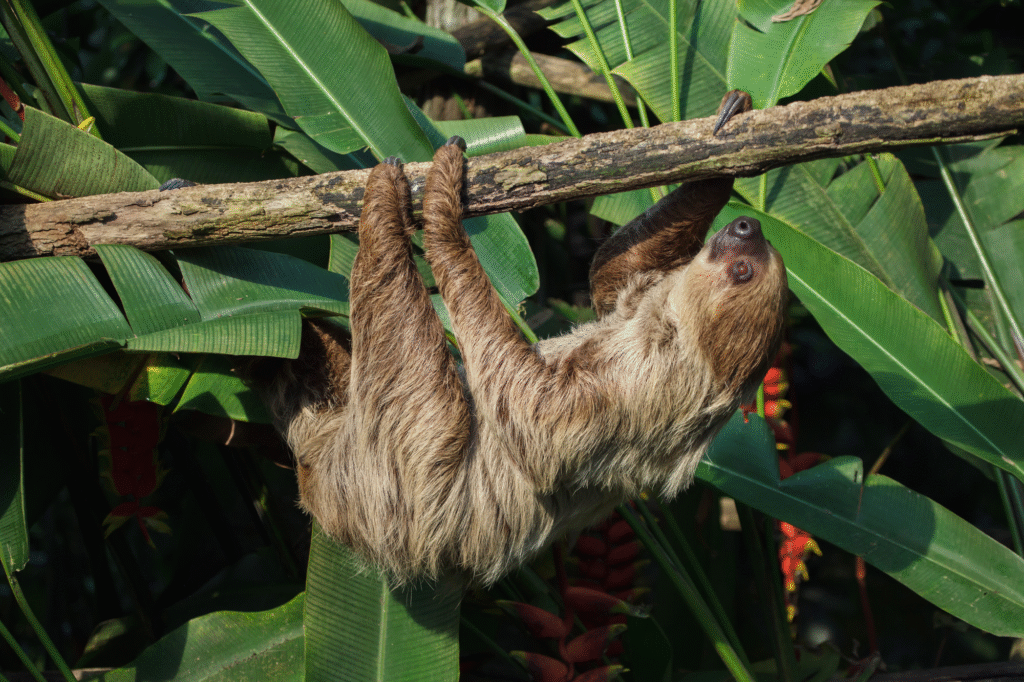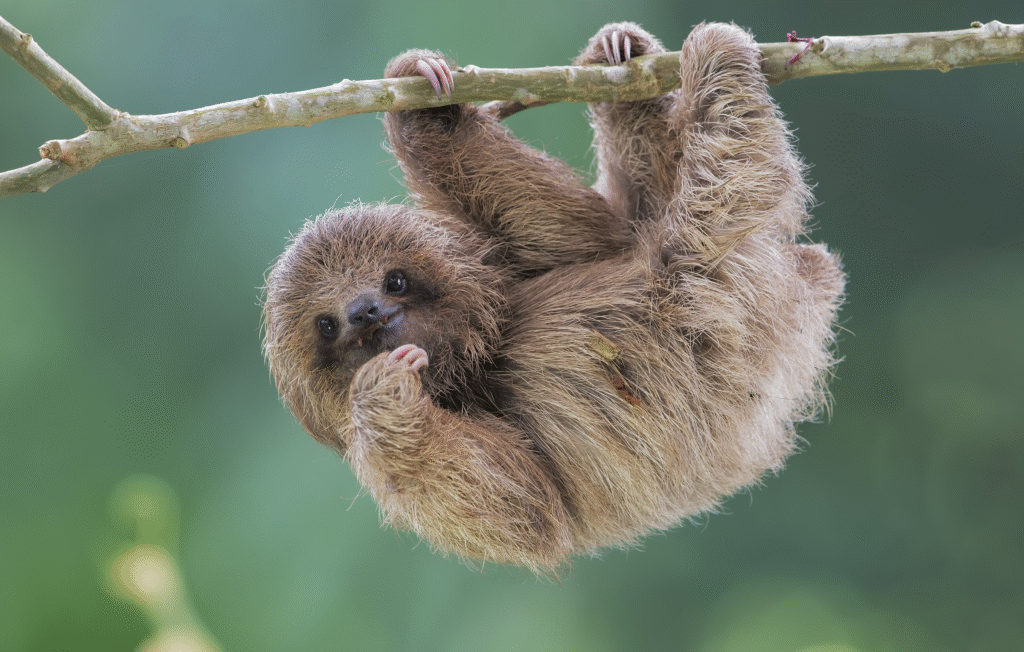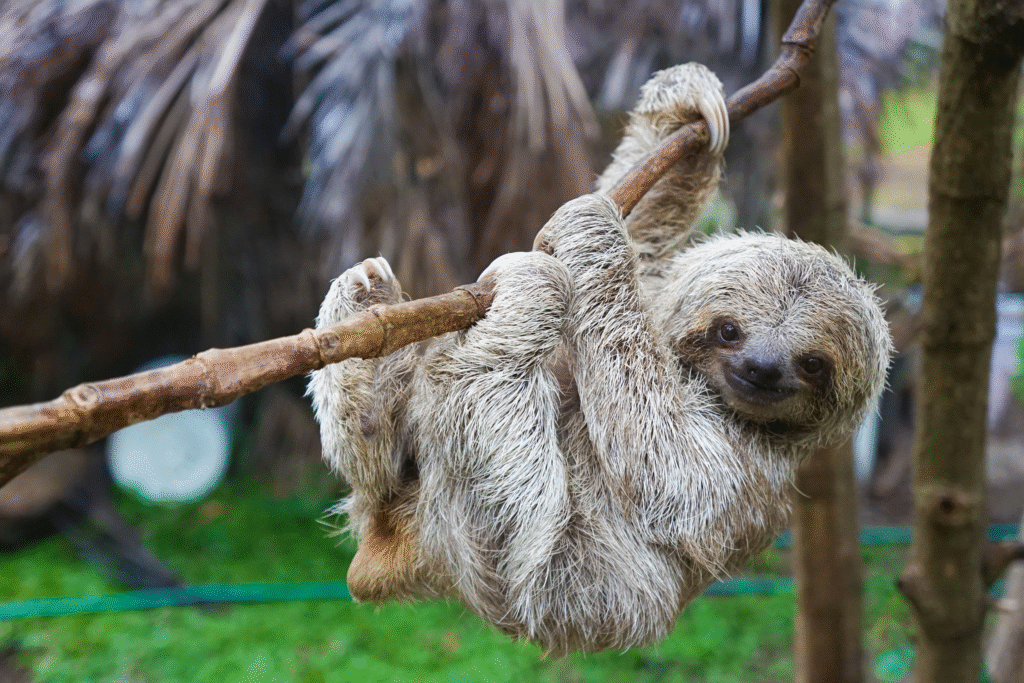Sloths are some of the most unique and beloved animals in the world. Known for their slow movements, peaceful nature, and upside-down tree-dwelling lifestyle, sloths have captured the hearts of animal lovers everywhere. But with growing environmental threats, many people wonder: Are sloths endangered?
To answer this question, we need to look at the six species of sloths and examine their current conservation status, the threats they face, and what is being done to protect them.
Meet the 6 Species of Sloths
Sloths are divided into two main families: two-toed sloths (family Choloepodidae) and three-toed sloths (family Bradypodidae). In total, there are six species:
Two-Toed Sloths:
- Linnaeus’s Two-Toed Sloth (Choloepus didactylus)
- Hoffmann’s Two-Toed Sloth (Choloepus hoffmanni)
Three-Toed Sloths:
- Brown-Throated Sloth (Bradypus variegatus)
- Pale-Throated Sloth (Bradypus tridactylus)
- Maned Sloth (Bradypus torquatus)
- Pygmy Three-Toed Sloth (Bradypus pygmaeus)
Each species has its own range, behavior, and conservation status. Some are thriving, while others are in serious danger of extinction.
1. Linnaeus’s Two-Toed Sloth

- Status: Least Concern
- Location: Northern South America (Brazil, Venezuela, Colombia, Peru, and Ecuador)
This is the most widespread of the two-toed sloths and is relatively well-adapted to forest life. It lives in rainforests and cloud forests, mostly at lower altitudes. The IUCN currently lists it as Least Concern, meaning it is not endangered. However, habitat destruction, especially deforestation in the Amazon, poses a long-term threat.
2. Hoffmann’s Two-Toed Sloth

- Status: Least Concern (some populations Near Threatened)
- Location: Central and South America (Honduras to western Ecuador)
Hoffmann’s two-toed sloth is also considered Least Concern, though some isolated populations are struggling due to forest loss. This species is more adaptable than others and can survive in disturbed forests and plantations, but ongoing deforestation still affects its numbers.
3. Brown-Throated Sloth

- Status: Least Concern
- Location: Central and South America (from Honduras to northern Argentina)
This is the most common and widespread sloth species. It is a generalist and lives in various types of forests. Because of its adaptability and large population size, it is not currently endangered. However, like other forest-dwelling animals, it is vulnerable to habitat destruction from agriculture and urbanization.
4. Pale-Throated Sloth

- Status: Least Concern
- Location: Northern South America (Guyana, Suriname, French Guiana, and parts of Brazil)
Another relatively stable sloth species, the pale-throated sloth is also listed as Least Concern. It is less studied than other sloths but seems to have a steady population. However, increasing logging and mining activities in its range could threaten its habitat in the future.
5. Maned Sloth

- Status: Vulnerable
- Location: Atlantic Forest of Brazil
The maned sloth is endangered in the wild, though officially listed as Vulnerable by the IUCN. It only lives in the Atlantic Forest, a highly threatened rainforest region in eastern Brazil. Over 85% of this forest has already been cleared, mainly for agriculture and urban development. Habitat fragmentation and hunting are major concerns for this species.
Because of its limited range and shrinking habitat, the maned sloth is one of the most threatened sloths on the planet. Conservation efforts are underway, but habitat protection is critical for its survival.
6. Pygmy Three-Toed Sloth

- Status: Critically Endangered
- Location: Isla Escudo de Veraguas, Panama
The pygmy three-toed sloth is the most endangered of all sloth species. It lives only on a single small island off the coast of Panama—Isla Escudo de Veraguas. Its entire population is estimated at fewer than 100 individuals.
This sloth is Critically Endangered due to its tiny range, limited food supply, and habitat disturbance. The mangrove forests it depends on are threatened by human activity, including logging and tourism. Without urgent conservation action, the pygmy sloth could disappear completely.
What Makes Sloths Vulnerable?
Several factors make sloths vulnerable to becoming endangered:
1. Habitat Destruction
Sloths are tree-dwelling animals. They rely on forests for food, shelter, and safety. When forests are cleared or degraded, sloths lose their homes. Many cannot travel long distances to find new habitats, and this makes survival difficult.
2. Fragmentation
Even when some forest is left, roads and developments often break it into smaller patches. Sloths move slowly and are at risk when they try to cross open areas, where they face dangers like predators, dogs, or cars.
3. Hunting and Pet Trade
In some areas, sloths are hunted for food or captured and sold as pets. Sloths do not survive well in captivity, especially when taken from the wild. Tourism also plays a role, as some people try to handle sloths for photos, causing stress and injury.
4. Climate Change
Rising temperatures and changing rainfall patterns can affect the trees sloths feed on. If certain tree species disappear or decline, sloths could struggle to find food.
5. Low Reproduction Rates
Sloths reproduce very slowly. Most species give birth to only one baby at a time, and females may only give birth once every one to two years. This makes it hard for populations to recover from losses.
Are Sloths Endangered as a Whole?
As a group, sloths are not considered endangered, but some individual species are at risk. The maned sloth and pygmy sloth, in particular, face serious threats. The other four species are currently stable, though their future depends on protecting forests and limiting human impact.
What Is Being Done to Protect Sloths?
Many organizations and researchers are working to protect sloths and their habitats. Some key efforts include:
1. Habitat Conservation
Groups are working to protect rainforests in Central and South America. Protected areas, like national parks and reserves, are key to preserving sloth habitat.
2. Reforestation
Planting native trees and restoring forest corridors helps sloths move safely between areas and expands their living space.
3. Education
Local communities are being educated about the importance of sloths and forest conservation. Eco-tourism that respects wildlife is being encouraged over harmful tourist practices.
4. Wildlife Rescue and Research
Sloth sanctuaries, like the Sloth Conservation Foundation (SloCo) and the Sloth Sanctuary of Costa Rica, rescue injured or orphaned sloths and conduct research to learn more about their needs.
How You Can Help
Even if you live far from sloth habitats, you can still make a difference:
- Avoid supporting wildlife selfies or places that let you hold or touch sloths.
- Donate to organizations protecting sloths and rainforests.
- Buy sustainable products, like rainforest-safe coffee, chocolate, and wood.
- Raise awareness by sharing information about sloths and endangered species.
Understanding the current status of sloths shows us that while some species are doing well, others are in real danger. Protecting sloths means protecting the forests they live in—and helping to keep the natural world in balance.
